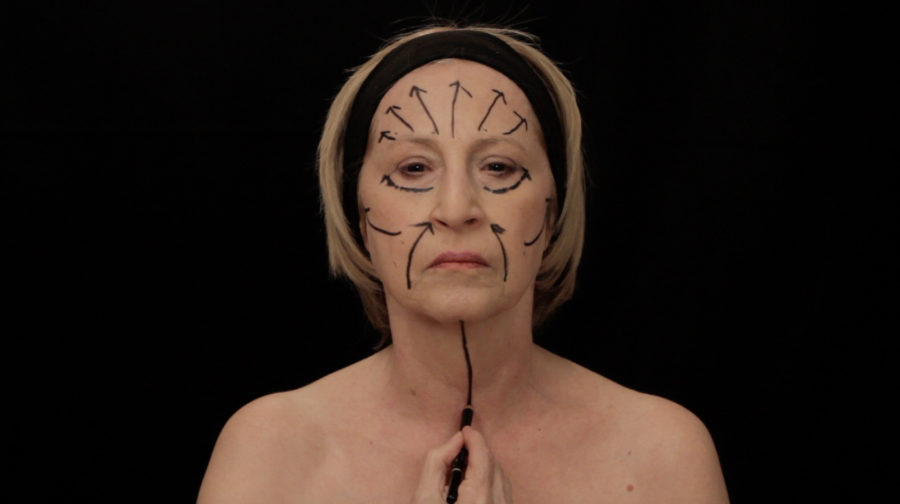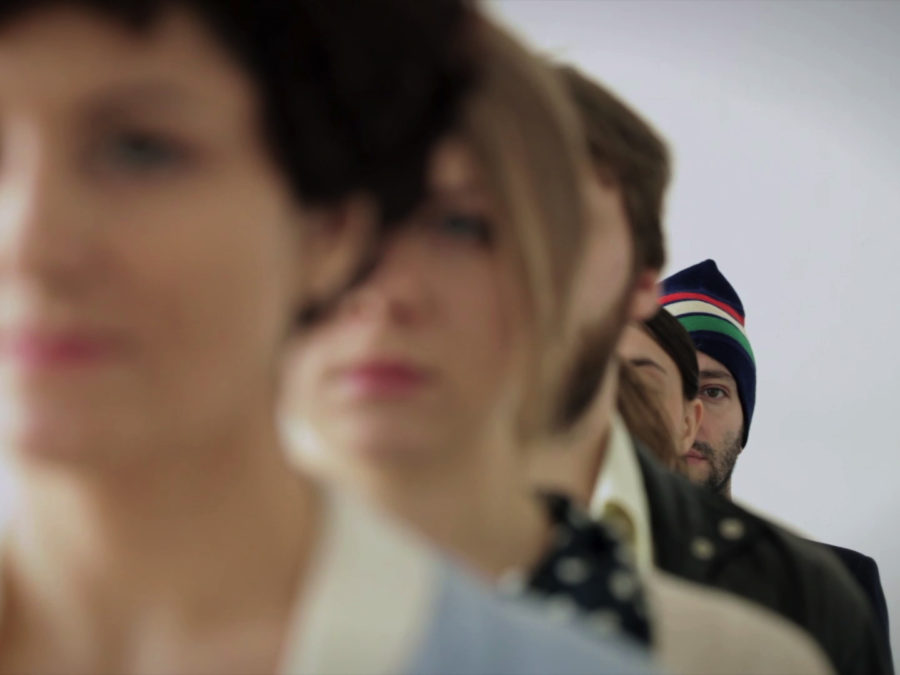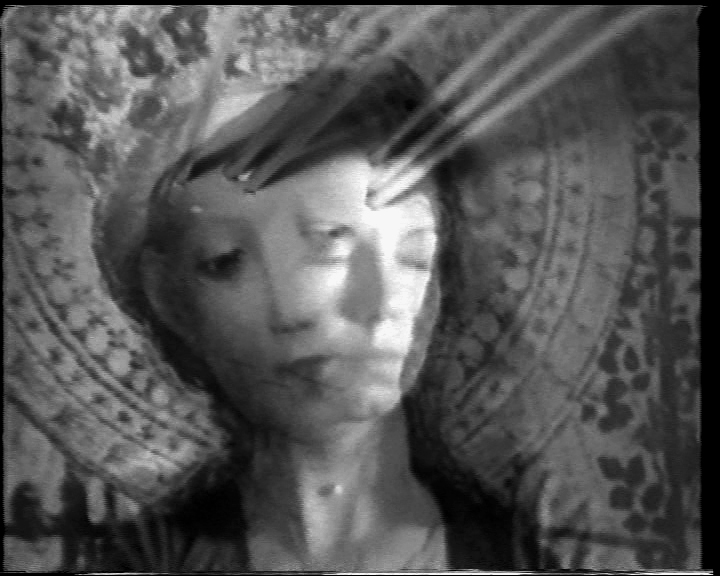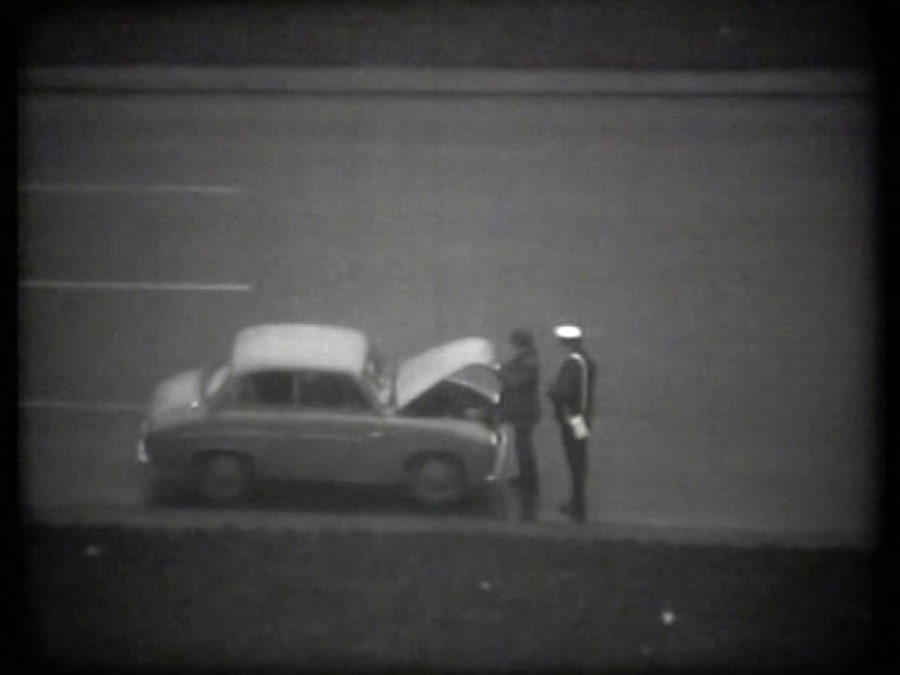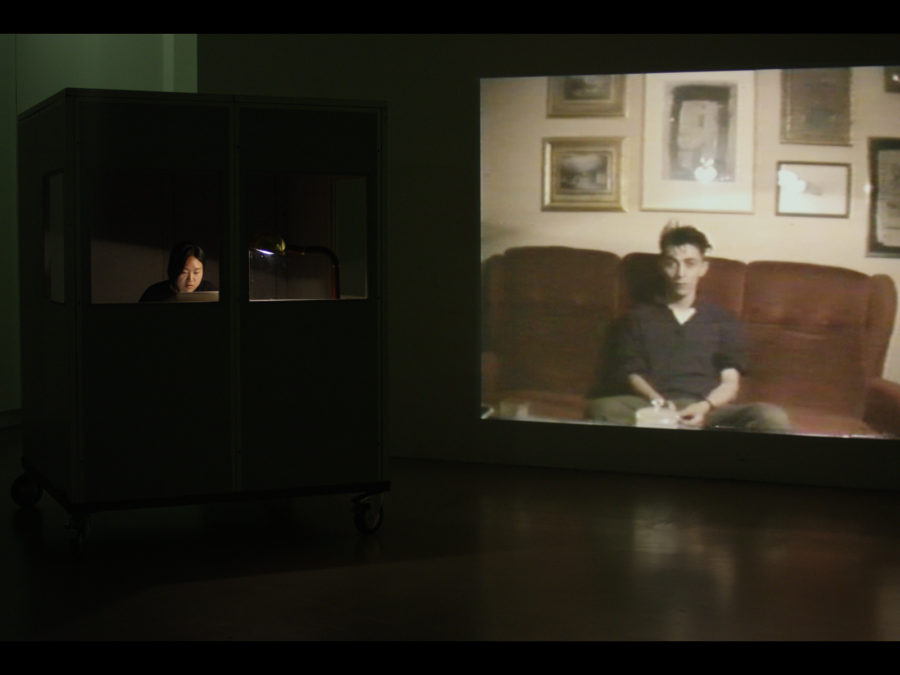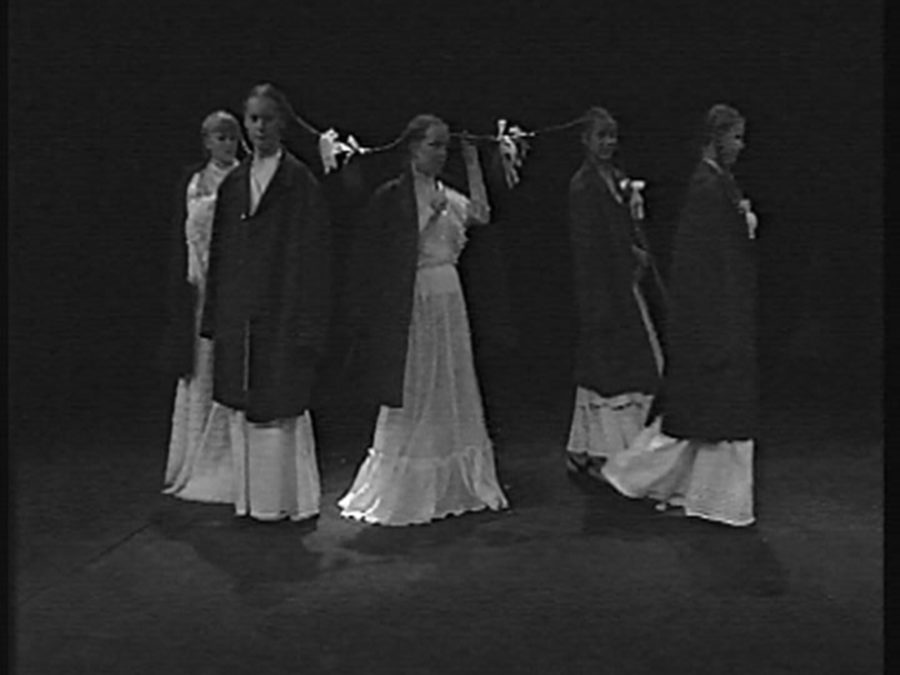INSTRUCTIONS No. 2 is a remake of Iveković’s famous early work Instructions No. 1 (1976) in which the artist looks directly at the camera while painting black arrows on her forehead, cheeks, chin, and around her mouth. The symbols are reminiscent of instructions for applying skin care products and facial massages or – in the contemporary reading of the work – of measures of plastic surgery. The concentrated process of marking takes place over almost the entire duration of the work. Toward the end, Iveković rubs the markings into her skin with her hands until they are partially absorbed leaving faint traces on her skin. While the artist precisely repeats the action from the 1970s in the new video, the differences to Instructions No. 1 show both in Iveković’s face and the recording technology. Both have gone through a process of transformation over the course of almost 40 years. Iveković juxtaposes the aging process of the human being with the process of technological modernization. What remains invisible is the political and social transformation process from the Socialist Republic of Yugoslavia to the Republic of Croatia, which definitively influences the reading of the work. Instructions No. 1 is one of Iveković’s early video works from the 1970s dealing with seductive media images of the female, which Iveković calls “sweet violence.” Her later works often also address physical and structural violence against women.
Sanja Iveković was born in Zagreb and belongs to the generation known as the Nova Umjetnička Praksa (New Art Practice). During the Croatian Spring in the early 1970s, they were able to liberate themselves from the dominant constraints of academic art. She was the first female artist in former Yugoslavia to publicly profess feminism: she understood this as a gesture of disobedience against the communist regime. Iveković has had solo exhibitions at Calvert 22 and the South London Gallery (2012–2013), the Museum of Modern Art, New York (2011–2012), at the Van Abbe Museum, Eindhoven (2009) and the Muzeum Sztuki w Łodzi (2009), and was the winner of the Camera Austria Award in 2009. She also participated in documenta 8 (1987), documenta 11 (2002), documenta 12 (2007), and documenta 14 (2017).
